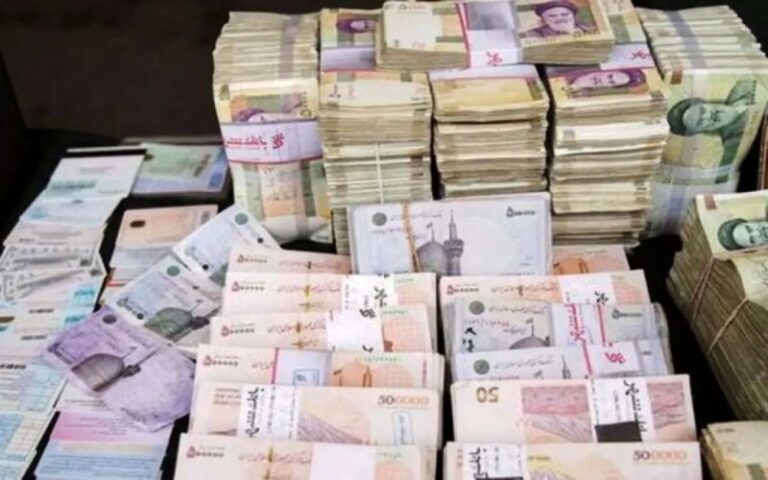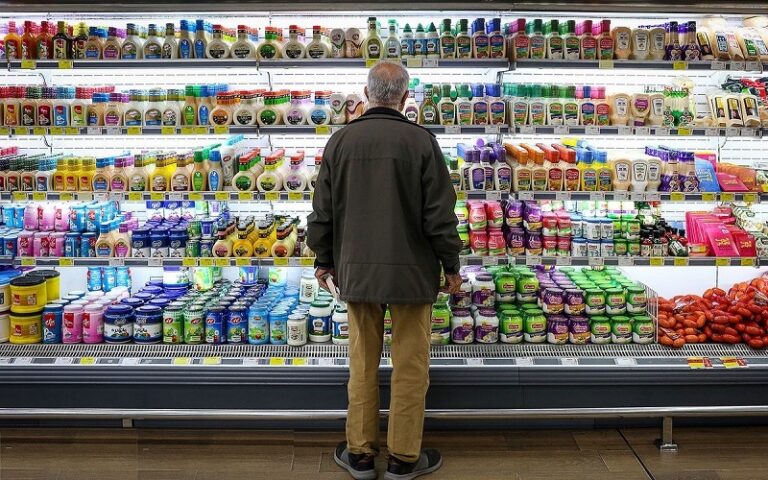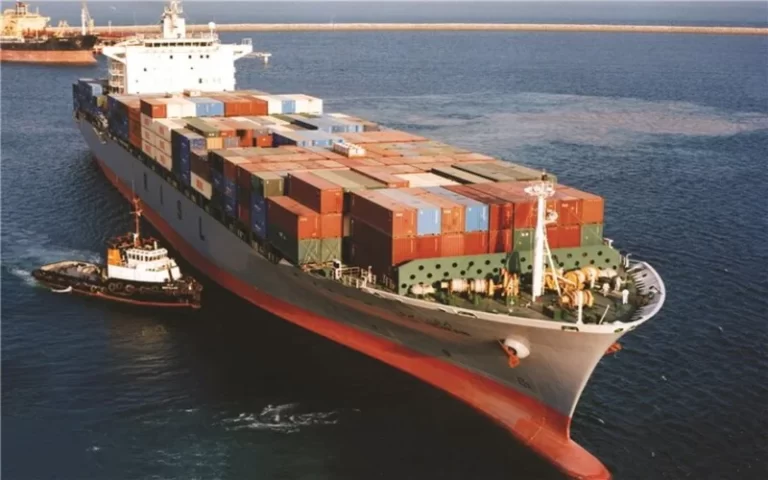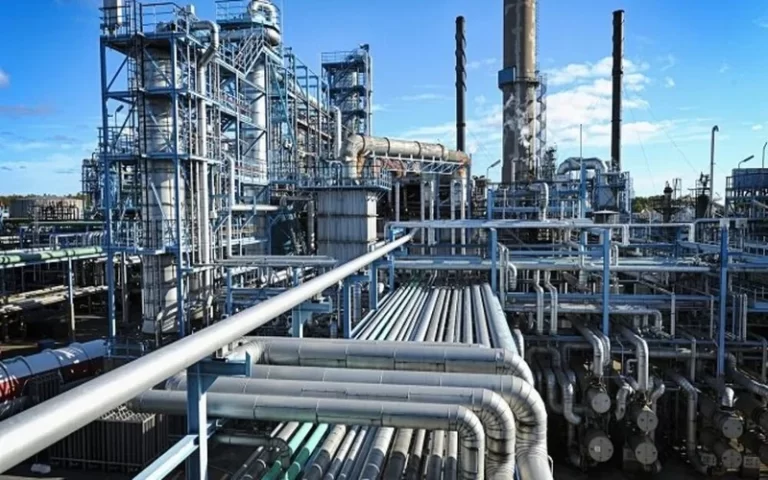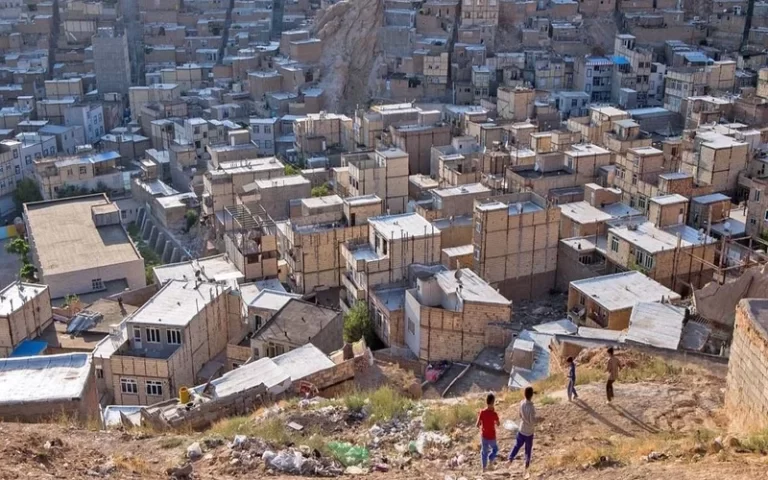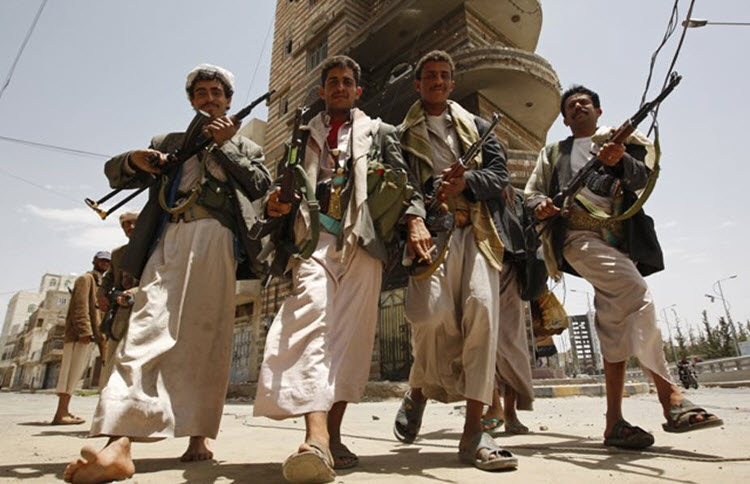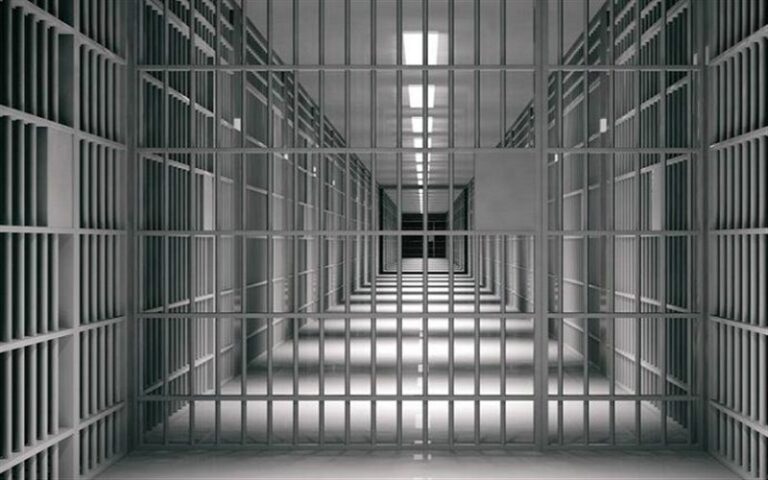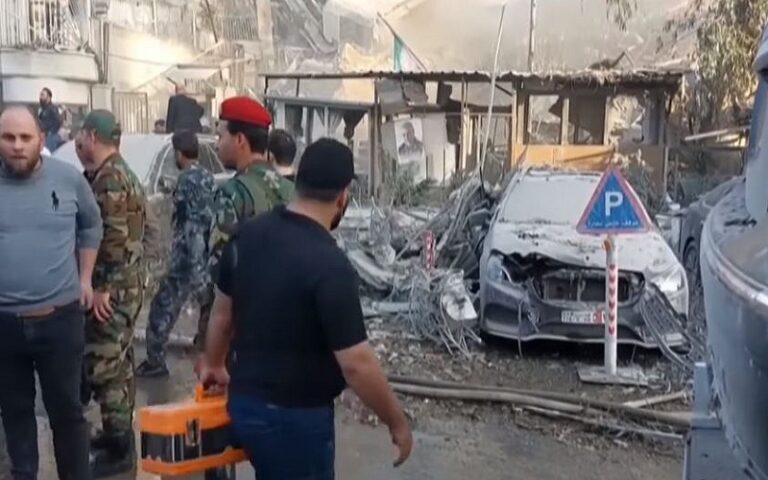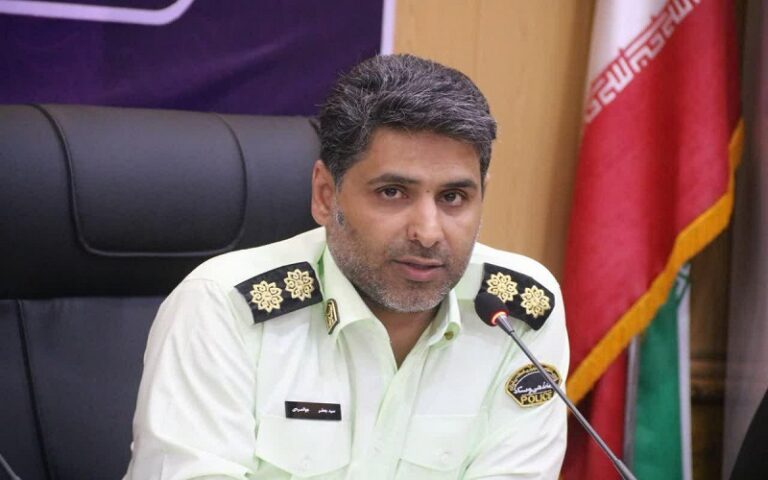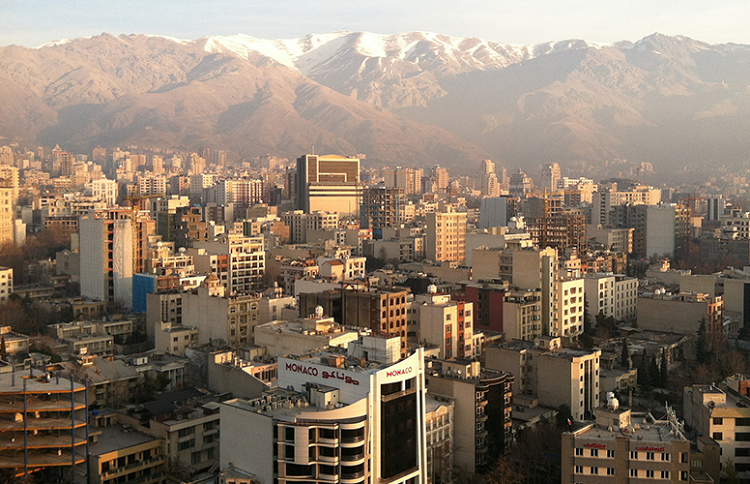Iran’s Rial Continues to Plummet
With the increase in the exchange rate of the US dollar in the Iranian currency market to over 650,000 rials and the emergence of a new wave of concerns among the public and economic activists, critics of the government considered the current situation as the result of “foolishness,” while defenders of the government claimed that the exchange rate would decrease again.
Mehrad Abad, a member of the Delegation of the Chamber of Commerce of Iran, told the regime’s ILNA news agency that what has caused the currency crisis and market turmoil we are currently facing is “not due to informing people about them but rather the result of foolishness” and “rooted in the nature of our economy.”
This economic activist believes that the main factor has been the weak and ineffective budgeting of governments, and sanctions have created many problems.
According to this member of the Chamber of Commerce, attributing problems to enemies is “scapegoating.”
On the other hand, Youssef Hosseini, the head of the Currency Committee of the Iranian regime’s Chamber of Commerce, has taken a defensive stance in support of the government and the policies of the regime’s supreme leader Ali Khamenei, stating that by adhering to Khamenei’s recommendations, the country’s economy, especially various markets including the currency market, can be well controlled, and perhaps the dollar price may return to around 600,000 rials or even lower.
Youssef Hosseini emphasized that regional events and conflicts can have an impact on Iran’s economy and “the enemy does not hesitate to make any effort to complete its destructive operations in this area.”
The state-run Etemad newspaper also quoted Ramin Pouladrag, a member of the Iran-Iraq Joint Chamber of Commerce, as saying that the only reason for the limited increase in the dollar price is political and regional events that “will surely be controllable and diminishable.”
This economic activist also attributed fluctuations to the “enemy,” a matter that media analysts relate to the report of the Kayhan newspaper and the connection of fluctuations to the media and the request to deal with them.
The regime’s Kayhan daily wrote in a report, “In a situation where the country’s economy is rising from the ground after heavy blows in the 2010s, some domestic media outlets, along with terrorist Zionists, are disrupting the mental security of society and fueling inflationary expectations to ground the country’s economy again.”
This has led some analysts to suggest that some media outlets have moved beyond currency fluctuations and some others have taken on the role of defending the government and regime. Also, security concerns have led economic activists’ statements to be in line with the statements of Iranian regime officials.
According to reports, the exchange rate has been on an upward trend since February 2024, reaching from 500,000 rials to 610,000 rials by the end of March 2024.
The slow and steady increase in prices continued until Israel’s attack on the Revolutionary Guards’ headquarters in Damascus, where the exchange rate exceeded 650,000 rials.
Iran’s Dairy Producers Reduced by 80% in 2 Decades
Mohammad Reza Bani Tabba, spokesman for the Iranian Dairy Industries Association, announced an “80 percent” reduction in the number of dairy product companies in the country over the past two decades.
Bani Tabba, spokesman for the Iranian Dairy Industries Association, told the regime’s semiofficial ILNA news agency on April 7 that the number of dairy companies in Iran has decreased from over a thousand companies in the 2000s to about 200 companies at present.
He attributed government policies as the cause of the decline in the number of dairy companies and said the Ministry of Agriculture has not yet announced the guaranteed purchase price of raw milk for 2024.
He also said that last year, the increase in the prices of final products was communicated to producers in July.
The spokesman for the Iranian Dairy Industries Association also referred to the decrease in dairy consumption in the country, attributing it to a decrease in people’s purchasing power.
Statistics from the Food and Agriculture Organization (FAO) also confirm a significant decrease in milk and dairy consumption in Iran.
In just three years, milk and dairy consumption in Iran has decreased by nearly 14 percent. Iran’s milk and dairy production also reached 7.9 million tons in 2023, a decrease of 208,000 tons.
FAO statistics also indicate very low milk and dairy consumption in Iran. For example, the per capita consumption of milk and dairy products by Turkish citizens last year was 3.5 times that of Iran.
Bani Tabba also mentioned the problem of dairy product exports and said that we currently have about 100,000 tons of powdered milk in storage, indicating that the export of processed dairy products is not easy, especially since export markets are highly competitive.
His statements come as FAO statistics show a sharp increase in Iranian dairy product exports against the decline in domestic consumption. Iranian customs statistics also support this.
According to FAO estimates, Iranian milk and dairy product exports have increased by 65 percent over the past three years, reaching 1.85 million tons. Imports of various Iranian dairy products have also decreased by 30 percent to 101,000 tons.
Additionally, the storage of 100,000 tons of powdered milk is happening at a time when reports of shortages of this vital foodstuff have been widely published in the country in recent years.
Bani Tabba also claims that dairy companies have adhered to government pricing over the past years, but reports from the Iranian Statistical Center show that since the inception of the Raisi government, the prices of various dairy products have increased 2.5 to 3.5 times.
Iran’s Non-Oil Trade Imbalance at Unprecedented Negative $17 Billion
New government statistics by Iran’s regime indicate a negative imbalance of $16.8 billion in non-oil trade during the year 2023.
According to customs statistics, Iran had about $49.4 billion in non-oil exports last year, which is seven percent less than 2022.
The country’s imports were $64.3 billion, which is seven percent more than 2022. Iran also imported $1.9 billion worth of standard gold.
In recent months, Iran’s customs administration has added statistics on oil, electricity, and services exports to its export figures for the first time to show a positive foreign trade balance, but it does not include these figures in its calculations of imports.
Oil exports:
Customs statistics show that Iran’s oil exports last year amounted to $35.9 billion, which is 8.6 percent higher than in 2022. International statistics, including those from data companies such as Kpler, indicate that Iran had 1.3 million barrels of crude oil exports per day last year, which is 48 percent higher than in 2022. The price of oil had also dropped by only 17 percent in global markets. It is unclear why, given the mentioned figures, the value of Iran’s crude oil exports has only grown by 8.6 percent. Additionally, Iran had daily exports of 220,000 barrels of Mazut last year, and in total, Iran’s oil exports should have been about $44 billion. However, customs statistics put this figure at $35.9 billion. Iran also had diesel and gasoline imports last year, but this is not accounted for in customs calculations.Services trade:
Customs statistics show that Iran had $1.3 billion in exports of “technical and engineering services” last year. This report does not refer to the total volume of service exports, including transit and imports of services into the country. According to Central Bank statistics, Iran’s total volume of service imports in recent years has been about $15 billion annually, with the country’s service exports being half of this figure. Iran’s customs has not specified why it includes exports of oil, electricity, and services in its statistics, but does not include imports of these items in foreign trade calculations. Iran has also faced extensive capital flight, especially in recent years. Government institutions have not released last year’s statistics, but Central Bank statistics show that Iran had about $9.3 billion in capital flight in 2022. The worsening foreign trade balance has led to a rapid depreciation of the rial’s value over the past few months. On Saturday, April 6th, the US dollar is traded at 646,500 rials in the free market. Iran’s rial has lost 18 percent of its value compared to March 2023 and about 31 percent compared to April 2023.Iran’s Natural Gas Consumption Increases While Production Continues to Stagnate
According to statistics announced by Saeed Aghli, an official at the National Iranian Gas Company on Wednesday, April 4, the Ebrahim Raisi government has only compensated for the growth in gas consumption over the past two years through a reduction in gas injection into oil fields and a decline in exports, with no progress in increasing gas production.
Saeed Aghli, the dispatching manager of the National Iranian Gas Company, announced Iran’s natural gas consumption in the past year as 249 billion cubic meters, showing an increase of about three percent, or seven billion cubic meters, compared to 2022.
Statistics from the Turkish Energy Market Regulatory Authority show that Iran reduced its exports to this country by 48% in 2023, reaching 5.2 billion cubic meters.
Iran had also severely restricted gas exports to Iraq during the fall and winter of 2023.
Iran has also been importing limited amounts of gas (a total of about 3 billion cubic meters) from Turkmenistan since the fall of 2022, but the northern neighbor halted both gas sales to Iran and gas swap operations through Iran to the Republic of Azerbaijan since January 2023.
Thus, the Ebrahim Raisi government has compensated for a significant portion of the seven billion cubic meter increase in domestic gas consumption in 2023 through a significant reduction in exports and gas imports.
On the other hand, according to the Ministry of Oil statistics, Iran has been injecting an average of 37 million cubic meters of gas into oil fields daily over the past decade to maintain oil production levels, but Fars News Agency reported in June 2023 that this figure had decreased to 30 million cubic meters.
About 80% of Iran’s active oil fields are in the second half of their life, and the majority of the country’s oil production comes from fields that were launched before the 1979 revolution and require daily gas injection of 300 million cubic meters to maintain production.
The Ebrahim Raisi government only injects ten percent of this required amount into the fields to compensate for the gas shortage in other sectors, a situation that will eventually render a significant portion of the country’s oil field reserves unextractable.
Compensating for the country’s gas consumption growth through reduced exports and gas injection into oil fields comes at a time when recently, Iran’s regime Oil Minister Javad Owji claimed that the country’s average gas production growth in recent years has been 5.2% annually (more than 12 billion cubic meters per year).
This claim comes despite the fact that the country has faced increasing and severe gas shortages over the past two years, with the country’s gas deficit reaching 300 million cubic meters per day in the winter, a figure equivalent to Turkey’s total gas consumption during the cold season.
BP statistics also show that while Iran’s average annual gas production growth has been over five percent in the past decade, this figure dropped to less than one percent in 2022. International statistics on Iran’s gas production in 2023 have not yet been published.
Additionally, the country’s consumption of 249 billion cubic meters of gas last year (682 million cubic meters per day) is reported while Iran’s Oil Minister recently claimed in a gas-exporting countries’ conference in Algeria that the country’s current daily gas production is one billion and 70 million cubic meters.
Iran only succeeded in launching the incomplete Phase 11 of South Pars last year, but the country’s gas production did not change because instead of building and installing new production platforms, an old platform from Phase 12 of South Pars was transferred to Phase 11.
The reason for transferring this platform from Phase 12 to Phase 11 was also incorrect drilling in the wells of the third platform of Phase 12, as this platform produced more brackish water than gas.
About a decade ago, during the launch of Phase 12 of South Pars, it was supposed to produce 84 million cubic meters of gas daily, but due to drilling errors, it only produced 65 million cubic meters of gas from the beginning, and now it only produces 43 million cubic meters of gas.
Phase 11 of South Pars, which was launched last year, was also supposed to produce 56 million cubic meters of gas daily, but due to delays in completing the wells, it currently produces only one-fifth of this amount of gas.
Iranian Youth Must Wait 100 Years to Become Homeowners
Passing the 100-year waiting period for buying a home; becoming homeowners has fallen out of orbit.
In a new report, Etemad newspaper has addressed the issue of housing, stating that workers, employees, retirees, and teachers who receive minimal wages and salaries, along with 12 million Iranian youths on the brink of marriage, are in a situation where the minimum waiting period to buy a home has reached up to 100 years.
On Wednesday, April 3, the state-run Etemad newspaper, has written that the investment slope in the housing sector has been declining since 2021.
The newspaper, referring to a severe decline in housing transactions, has announced that a significant portion of the population is unable to buy homes because with these wages, they have fallen below the poverty line.
The newspaper’s report mentions housing facilities under the title “troublesome loans,” stating that it’s quite strange that one-fourth of housing loans must cover the cost of securities, and the remainder of the loan is subject to a 23% interest rate, and loans that are still unpaid are subject to installments and interest.
Meanwhile, also on April 3, the Donya-e-Eqtesad newspaper, wrote that official data on rent trends indicate a 39.6% nationwide rent increase and a 52% rent increase in Tehran within a year, marking “a new era in the rental market” whose main characteristic is “the possibility of compensating for the landlord’s cost of living increase through rent.”
The newspaper emphasized that the two main reasons for this inflation in rent are the upward change in the general inflation level and the housing inflation in recent years, which have acted as accelerators in the sharp rise in “rental costs.”
Based on this, it has been announced that in the national rental market, general inflation and annual rent inflation have become equal, and in Tehran, annual rent inflation has outpaced general inflation.
These events in the housing market come as Ebrahim Raisi promised to build one million homes per year and curb inflation in this sector, but in the past two and a half years, not only has this promise not been fulfilled, but with the average price of housing in Tehran exceeding 830 million rials (approximately $1,285), people are facing the phenomenon of “housing distress” and “housing poverty.”
Labor experts and activists have also stated that 75% of workers’ wages are allocated to housing, and other needs such as food are excluded from their priorities.
Iran Condemns Pressure on Regional Proxies while Aiming to Expand Malign Influence
The United States announced new sanctions on Tuesday, March 26, against six firms, two tankers, and a money exchange, all of which are alleged to have engaged in business dealings to the benefit of the Iranian regime and two of its militant proxies, Hezbollah in Lebanon and the Houthis in Yemen. Separately but on the same day, the US also announced sanctions targeting 11 individuals and entities for helping the Iran-backed Syrian government of Bashar al-Assad to evade preexisting sanctions and raise financing through drug trafficking.
The new measures emerged very soon after 13 Iran-backed militants were killed in Syria, and just days after Iran’s UN ambassador Saied Iravani called for a lifting of all sanctions on the Assad regime, as well as the removal of US forces from Syria, where they have been working to prevent resurgence of the Islamic State (ISIS) terrorist group. Iravani drew an arguably arbitrary distinction between US forces and Iranian forces in Syria, calling the former “uninvited” despite the fact that they work closely with the semi-autonomous government in Syria’s Kurdish region while Iran-backed militias often operate above and separate from the actual Syrian military.
The Iranian regime’s envoy’s comments before the UN reflect a longstanding and far-reaching strategy of trying to supersede Western influence in the Middle East region. This was underscored by remarks delivered around the same time by regime Supreme Leader Ali Khamenei and carried by Fars News Agency. Khamenei either expressed or feigned confidence about the US withdrawing its forces not just from Syria by from across the region, and gave credit in advance to Hamas.
Khamenei’s remarks came just ahead of his meeting in Tehran with Hamas head Ismail Haniyeh, which reinforced the Iranian regime’s embrace of Hamas as a key part of the “Resistance Axis” that also includes Hezbollah, the Houthis, the Syrian militants propping up Assad, and similar Iran-backed militants in Iraq. Khamenei and other leading Iranian regime officials have repeatedly praised the October 7 attack as an “irreparable defeat” for Israel and its Western backers, while also helping to mobilize the Axis to keep pressure on both.
Shortly after war erupted in Gaza, the Houthis have been waging a campaign of attacks upon commercial shipping in the Red Sea. Iranian regime proxies in Iraq and Syria carried out more than 170 attacks on US and US-allied military assets in the region until early February, at which point they shifted focus in the wake of American retaliation for the deaths of three US service members at a border installation in Jordan.
That shift in focus reportedly came in response to appeals from Iran, but has arguably had little real impact on Iraqi and Syrian contributions to regional instability. The regime is by all accounts still providing groups in both countries with a steady supply of arms and logistical support to further carry out attacks in the region.
Iran’s state-run Tasnim News Agency appeared to brag about those threats on Friday via an article that quoted Technology Minister Issa Zarepour as declaring that Iran has become one of the top ten countries in the world in terms of space launch technology, following a recent satellite launch carried out from a Russian launch pad. The report claimed that the Iranian space industry had been “fully indigenized” with help from the policies of President Ebrahim Raisi, who has also empowered the Islamic Revolutionary Guard Corps to expand its presence in a number of fields.
While Zarepour’s comments fell short of direct threats of expanded missile development and trafficking, it is widely understood that space launch technology has a dual purpose as components of military rockets, including potentially nuclear-armed intercontinental ballistic missiles. The IRGC is already in charge of the largest stockpile of ballistic missiles in the region, and portions of that stockpile have steadily made their way into the hands of regional militant groups, thus featuring prominently in some of the most recent Houthi attacks in the Red Sea.
Those attacks remain largely ineffective but still demonstrate notable escalation, with a French warship having shot down at least three ballistic missiles last Thursday alone. Reports of that engagement emphasized that attacks upon commercial vessels and the coalition guarding them have become a near-daily occurrence, even as joint American and British strikes on Houthi arms depots have become commonplace as well.
Before missile attacks became prevalent, the Houthi relied even more heavily upon Iranian-made one-way attack drones, of the sort that have also been delivered to Russia by the thousands since the start of war in Ukraine. Iran’s drone technology is also reported to be evolving and was recently featured at a military arms exhibition in Doha. Specifically, Iran presented to potential buyers a drone that it had named “Gaza,” claiming it capable of carrying up to 13 bombs over a 1,200 mile operational distance.
These specifications were disputed by at least one competing arms manufacturer, and indeed the Islamic Republic has a long history of overstating its own military capabilities. Nonetheless, there is an underlying fact of ongoing development which threatens to increase the capabilities not only of Iranian forces themselves but also of various proxies and allies. What’s more, these military resources open the door for new trade with those same allies, as indicated by the fact that Tehran recently claimed once again to be on the verge of taking delivery of Russian-made Su-35 jet fighters, which would allow the Iranian air force to make its first truly significant upgrade since the 1979 revolution.
But as much as this potential trade represents a challenge to Western interests and global stability, Iran’s own advancements may also pose an indirect threat to its own allies. This is especially likely if Iran proves to have less control over its military proxies than is generally assumed. That assumption was seemingly reflected last week in a public statement from the Houthis promising not to attack Iranian, Russian, or Chinese vessels. But just days later it was reported that an attack had been launched against a Chinese vessel anyway, signaling a possible loosening of the reins on Houthi operations.
91 Journalists, Media Activists Persecuted In Iran in Past 3 Months
An active non-government organization announced in a report on Tuesday, April 2 that 91 journalists and media activists in Iran have come under persecution in the past three months.
The Iranian regime, in the first three months of 2024, has subjected at least 91 journalists, media activists, and media outlets to judicial and security persecution.
“The Organization for the Defense of Freedom of Information” has compiled its analytical-statistical report on violations of the rights of media, journalists, and citizen journalists from January 1, 2024, to March 30.
This report is based on a total of 124 press cases updated from primary sources and reports published in the media and human rights organizations.
The report emphasizes that during this short period, the Iranian regime has registered at least 12 arbitrary detentions of journalists and media activists on its record. Among them, three journalists have been transferred to prison for the execution of the detention order, and nine others have been summoned to judicial and security institutions.
The Organization for the Defense of Freedom of Information says that during this period, the house of one journalist was searched by security forces, and the assets of another newspaper were confiscated.
Meanwhile, a news agency has expelled its photographer for criticizing the government.
The report states that 24 journalists and media directors, including seven women and seventeen men, were collectively sentenced to 14 years and seven months in prison, 990 million rials (approximately $1,564) in cash fines, two years of exile, four years of deprivation from journalistic activities, four years of prohibition from social media activities, and two years of prohibition from leaving the country.
The Organization for the Defense of Freedom of Information adds to this report that the number of judicial persecutions of journalists and media executives in February 2024 has increased by 40 percent compared to the similar period a month before.
This organization notes that this report only addresses data that was possible to collect, verify, and document.
The International Federation of Journalists emphasizes in its report from 2023 that at least 27 journalists were detained in Iran in the past year.
This is while the Committee to Protect Journalists, based in New York, announced on January 19, 2024, that Iran, after China, Myanmar, Belarus, Russia, and Vietnam, is the sixth largest prison for media owners.
IRGC Commanders Dead in Attack on Iranian Regime Consulate in Damascus
Following an airstrike attributed to Israel on the Iranian regime’s consulate in Damascus, which resulted in the killing of several senior members of the Revolutionary Guards, the Iranian Ministry of Foreign Affairs summoned the chargé d’affaires of the Swiss embassy as the representative of U.S. interests in Iran.
Hossein Amirabdollahian, the Iranian regime’s Foreign Minister, wrote on his X account on April 2, stating that “an important message has been sent to the U.S. government as a supporter of the Zionist regime.”
The Iranian Foreign Minister emphasized that “The US must be held accountable.”
This comes as Israel’s Defense Minister, in the first indirect response to the attack attributed to the country against the Iranian consulate in Damascus, stated that Israel operates “everywhere” to deter its enemies.
Yoav Gallant told the Israeli parliamentary committee on foreign and defense affairs on Tuesday, April 2, that “we are engaged in a multi-front war. Every day, we conduct operations everywhere to prevent our enemies from gaining strength.”
Meanwhile, Axios cited an unnamed U.S. official as saying that the United States had told Iran it had no involvement or precise information about the Israeli attack.
The Israeli airstrike on the building of the Iranian consulate in Damascus, located near the Iranian embassy, resulted in the death of seven Revolutionary Guards (IRGC) officers, including Mohammadreza Zahedi, one of its senior commanders and the head of Quds Force operations in Syria.
Hossein Akbari, Iran’s ambassador to Syria, stated that besides the seven Iranian military personnel killed, six others were also killed, whom he referred to as “Syrian citizens.”
Zahedi is a former commander of the Revolutionary Guards’ Air Force and an active member of the Quds Force, responsible for leading this force in Syria and Lebanon.
Reactions of the Iranian regime’s authorities
Ali Khamenei, the Supreme Leader of the Iranian regime, praised Mohammadreza Zahedi in a written message on Tuesday and wrote that Israel “will be punished by our brave men, and we will make them regret this crime and similar ones.” Regime president Ebrahim Raisi also issued a statement calling the attack on the Iranian consulate in Damascus “blind terrorism” and addressing Israel, wrote, “this cowardly crime will not go unanswered.” Axios, citing a senior Israeli official, wrote that the country’s military is on standby for potential retaliatory attacks against Iran-backed militias in Syria.Israel claims the targeted building was a “legitimate military target.”
Meanwhile, The New York Times, citing “Israeli officials” and “a member of the IRGC overseeing the Quds Force,” wrote that Israel’s attack on a building affiliated with the Iranian regime in Damascus targeted a meeting where Iranian intelligence officials and Palestinian militants were supposed to discuss the Gaza conflict. The New York Times report suggests that leaders of the Palestinian Islamic Jihad and a group of Gaza militants supported by the Iranian government attended a meeting on Tuesday in the destroyed building. Ziyad al-Nakhalah, the Secretary-General of Palestinian Islamic Jihad, was invited from Syria to Tehran last week for talks with Iranian regime officials and coordination regarding the continuation of the Gaza war, simultaneously with the visit of Ismail Haniyeh, the head of Hamas’s political bureau, to Tehran. Four Israeli officials, whose names were not mentioned by The New York Times, said that while their country conducted the airstrike operation, they denied the diplomatic status of the targeted building. These officials also claimed that the building was under the control of the Revolutionary Guards and their activities, hence was considered a “legitimate military target.” According to reports from Syrian media, Israeli missiles were fired from the “occupied Golan Heights,” and the Syrian air defense system intercepted some of the missiles, but the ones that hit caused “complete destruction of the building,” resulting in “all individuals inside being killed or wounded.” Although Israel has been targeting “Iranian-affiliated targets” for over a decade to prevent Iran’s military consolidation and its allies in Syria, this is the first time that buildings affiliated with the Iranian regime’s consulate have been directly targeted by Israel, indicating a noticeable escalation in Israel’s operations against the Iranian government in the region.Questionable Motives behind Iran’s Death Sentence for Police Officer who Killed Protester
International media including Agence France Presse reported on Wednesday that an Iranian police officer, Jafar Javanmardi, had been sentenced to death over the killing of a protester during the country’s nationwide uprising in late 2022. The victim, Mehran Samak, expressed support for the anti-government protest movement on November 30 of that year by honking his vehicle’s horn to celebrate Iran’s national soccer team losing to the US at the World Cup. In direct response to that gesture, Javanmardi reportedly fired at least one blast of pellets from a shotgun, killing Samak.
Reports of Javanmardi’s sentencing did not make it clear whether or not he was the only officer involved in the incident. Neither did they specify what evidence the court used to ascertain that he alone was responsible for the killing. This is arguably noteworthy because since the end of 2022, a number of protesters have been held responsible for the deaths of security officials, only for questions to arise from defense attorneys and human rights advocates about the fairness of their trials and the veracity of the evidence used in securing convictions.
In many cases, that evidence included confessions that were alleged to have been elicited through torture, while courts have also been accused of suppressing evidence which pointed to the innocence of certain defendants. These practices have even been used to secure convictions for multiple individuals in connection with singular deaths. Dozens of individuals have reportedly been sentenced to death, with at least nine having been carried out so far, although the charges underlying those executions are not technically murder but rather “enmity against God” and “spreading corruption on Earth.”
Javanmardi, on the other hand, was sentenced to death “in accordance with the Islamic law of retribution, known as the ‘qisas’ law, on the charge of premeditated murder,” according to a lawyer for Samak’s family. This indicates that unlawful killings by security forces and protest actions leading to injury or death are considered categorically different by Iran’s judiciary, even if the outcome is the same in certain cases.
Of course, the outcome rarely is the same, and Javanmardi’s death sentence appears to be unique. No other such sentence has been reported for police or other authorities in the 19 months since the uprising began. In fact, Javanmardi is one of very few officers to face any legal repercussions whatsoever for actions taken during the uprising, despite the fact that hundreds of protesters were killed in the streets and in detention facilities between September 2022 and the end of that year.
According to the leading pro-democracy opposition group, the People’s Mojahedin Organization of Iran, the number of fatalities quickly reached 750, while another 30,000 protesters were arrested. In its recent report, a fact-finding mission on the regime’s crackdown reported to the United Nations Human Rights Council that there were certainly over 550 protester deaths, and that authorities had deliberately aimed to cause permanent injury with practices such as firing pellets directly at people’s eyes.
Tehran has effectively confirmed the PMOI’s arrest estimate, but continues to deny the casualty figures from both it and the UNHRC.
The announcement of Javanmardi’s conviction and sentencing is likely a consequence of the concerns created among Iranian authorities by international attention to the fact-finding mission’s initial report. A death sentence for one abusive police officer may give the superficial impression of balance and impartiality in the regime’s response to the 2022 uprising. But of course that impression evaporates when Javanmardi’s case is put in context with all of the prosecutions of non-violent protesters and all of the abuse allegations which have been explicitly rejected by regime authorities.
This is not the first instance of those authorities seemingly asking the public to give them credit for protecting the rights of protesters. Soon after the nationwide protests began to calm down in early 2023, Supreme Leader Ali Khamenei announced a broad offer of amnesty to persons who had been arrested during the uprising and had either already received prison sentences or were facing prosecution that could lead to multi-year terms. Iranian state media explicitly cited this as evidence of compassion and patience on the part of Iranian law enforcement, but activist groups were quick to raise doubts about the veracity Khamenei’s offer and the terms of detainees’ possible release.
These doubts were later validated by reports of amnesty recipients being made to sign letters of apology which effectively doubled as confessions to crimes in absence of prosecution. The letters also conveyed a promise to avoid similar activities in the future, thus providing a ready pretense for re-arrest in the event that former arrestees are found to still be advocating for political or social change. In recent months, as the regime’s crackdown on dissent has carried on, there have been a number of reports of amnesty recipients being detained and handed sentences that are clearly still related to the 2022 uprising.
Javanmardi’s death sentence may be intended to distract attention from this phenomenon and from the findings of the UNHRC’s fact-finding mission. But in absence of genuine transparency about his case and others like it, it is more likely that the condemned police officer will simply become a new focus of discussion about the regime’s penchant for politically-motivated sentencing, forced confessions, and scapegoating. This is especially likely in view of the fact that Javanmardi is not the only regime official or well-connected person to be conspicuously held accountable for broader malfeasance at times of political sensitivity for the regime.
Average Housing Price in Tehran at 830 million Rials
According to the latest report by the Central Bank of Iran, the average housing price in Tehran has reached over 830 million rials (approximately $1,353). The regime’s 90 Eghtesadi website reported a 60% decline in transactions in this sector in 2023.
Iranian media reports indicate that the housing price in Tehran, based on the latest official data released on March 18 by the Statistical Center of Iran, has reached 833.12 million rials per square meter.
Reports suggest that the average price of houses in Tehran has increased to 833.12 million rials after almost a year, precisely an increase of 168.72 million rials (approximately $275) per square meter.
This decline in transactions, according to some experts, indicates the continuation of the upward trend in prices in the market, which could lead to further declines in real estate transactions.
According to reports, based on the Central Bank of Iran’s data, the 11-month transactions (from April 2023 to March 2024) have been the lowest since 2016 and even before that.
Furthermore, a comparison of the statistics of 2023 with the real estate transactions in 2017 shows a 75% reduction in this area.
From the perspective of stakeholders in this field, this decline in transactions is likely to continue. Kianoush Goodarzi, the head of the Tehran Real Estate Consultants Union, stated that the real estate sector is influenced by various factors such as government fiscal policies, inflation, exchange rates, and more. He emphasized that what happens in the new year largely depends on the behaviors and policies of the government.
Goodarzi told “Hamshahri” newspaper that with the increase in the price of each dollar from 500,000 rials to 600,000 rials (the current price is around 61,350), sellers who were looking for buyers and offering discounts withdrew from selling and raised their offered prices by 20% to see what would happen in 2024.
Hossein Rostami, the head of the Mashhad Real Estate Consultants Union, also stated on March 27, “The government and the private sector must reduce the gap between supply and demand so that a change may occur in the housing market, and recession does not dominate the housing market this year.”
Reviewing the developments in the Iranian real estate market indicates that the reduction in people’s purchasing power is the most important factor in the inability of applicants to obtain housing.
Last summer, the Research Center of the Majlis (Parliament) wrote in a report that the lower to middle-income groups, particularly those in deciles one to three, are “absolutely” unable to provide the housing they need for residence.
During the election campaign and after taking office as president, Ebrahim Raisi promised to build one million housing units per year. But more than two years into his government’s term, he has yet to achieve any progress in this area.


